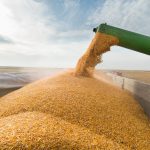Chicago grains and soybeans firmed on Friday as expectations improved for U.S.-China trade relations after leaders of the two countries spoke and agreed to further discussions.



Down 10 points in three years says FAS

Wheat futures rise amid Russia-Ukraine tensions

China's dry weather may impact wheat harvests

Other crop prices firmer, stronger




